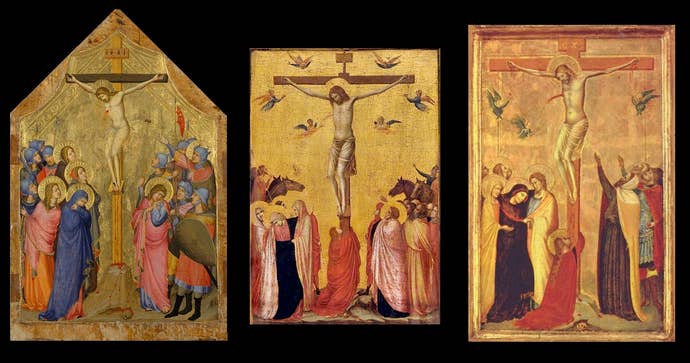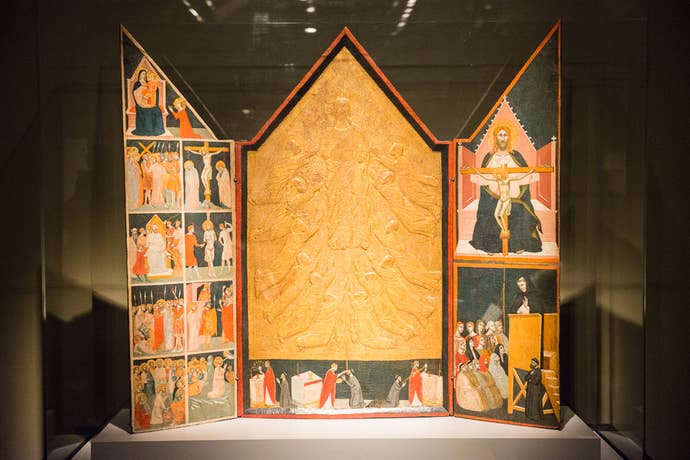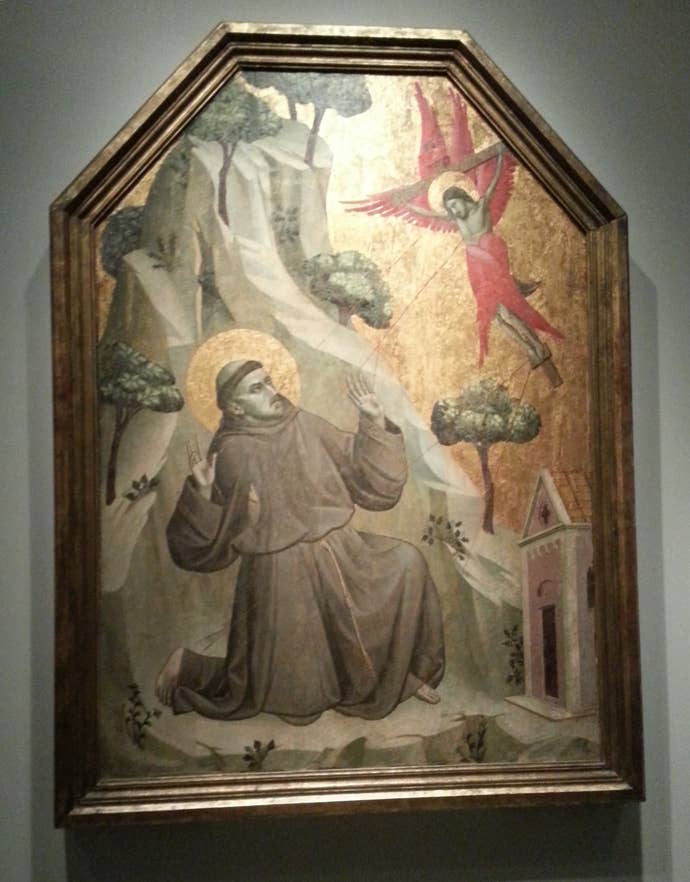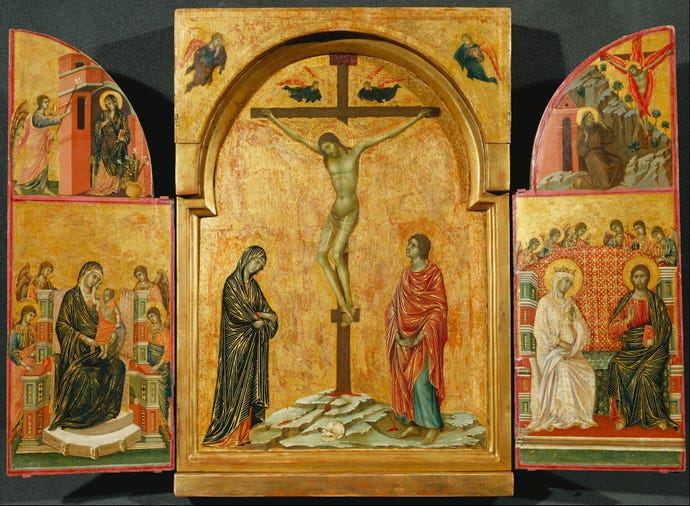Flying Laser Jesus and Gaming's Citizen Kane
What does Florentine Renaissance art have to do with cultural acceptance and the industry's creative stagnation?
This article first appeared on USgamer, a partner publication of VG247. Some content, such as this article, has been migrated to VG247 for posterity after USgamer's closure - but it has not been edited or further vetted by the VG247 team.
Gamers have spent a silly amount of time fretting about "gaming's Citizen Kane," the one project that would show the unbelieving masses realize how awesome video games could be and make them beg forgiveness for all those years they thought less of us for beating Ninja Gaiden II on Master Ninja difficulty, for 200.6 %-ing Castlevania: Symphony of the Night, and for perfecting High Tides and Green Grass in Rock Band on Expert difficulty.
Here's the bad news: That's not going to happen. There won't be a lightning bolt event that makes everyone respect games all of a sudden. Maus won a Pultizer and the masses still think the diversity of comics is encompassed by Archie and super heroes. Much as it pains me to admit, after decades of braindead power fantasies and bro-tastic epics where we interact with the world exclusively through punching and shooting, we built our own structurally sound cultural ghetto. So I've given up on asking for Oscar-worthy game stories, and certainly gave up on wondering when we'll get our Citizen Kane. No, what I want now is our Flying Laser Jesus.
Like many gaming buffs, I have a tendency to think about the medium's growth in parallels to film (on good days) and comics (on bad). This is partly because there are obvious parallels between the various forms of art, and partly because they're just the ones I know best. So it was with some surprise earlier this year when I went to an Art Gallery of Ontario exhibit of Florentine Renaissance art--something I have a dim understanding of, at best--and found myself struck by the parallels to the recent AAA gaming industry.

Here was a gallery packed with the work of brilliant artists, master craftsmen devoting incredible amounts of time to the creation of a dishearteningly narrow range of images. Basically, if you were an early 14th century artist in Florence, you were apparently painting endless works of Christ on the cross. The image of a crucified Jesus was the first-person shooter of its day, churned out ad nauseum, the supply of such paintings only exceeded by the apparent demand.
The image of a crucified Jesus was the first-person shooter of its day, churned out ad nauseum, the supply of such paintings only exceeded by the apparent demand.
And it wasn't just that the images were violent. It's that they were uniform in their violence. Granted, the image of the crucifixion is--pardon the word choice--iconic, but these depictions were essentially standardized, from the direction Jesus was facing to the bend of the knees and the small crowd of surrounding mourners. Even the blood was largely standardized, from how far down it ran along the arms from the stigmata to the arc and length of the stream gushing from the wound in his side. Artistic interpretation limited largely to whether or not there was a cherub flying alongside Jesus and collecting the gushing blood in a bowl, and whether or not a skull was present at the base of the cross. It reminded me of modern military shooters and how regimented--again, pardon the word choice--they are, from regenerating health to turret sequences with exploding barrels to the encroaching frame of Smuckers' brand jam that tells you you're being shot to death.
It seems the Renaissance suffered from the same Appetite for Sameness that the modern gaming industry is struggling with. In both cases, artists are the products of studios and schools that had taught them not how to bring their personal creative vision to life, but to produce work to industry standards so they could make a living. They are employed to create their art at the behest of others, be it the church or Activision. And just like many game developers, quite a few masters of Renaissance art are unknown to us, never having received recognition for their work by name, like a level designer left off the credits for leaving a project before it ships.

Of course, it's an oversimplification to suggest the current AAA industry is nothing but shooters. Just like the Florentine Renaissance had a few Madonna With Child pictures and Nativity scenes, so too does mainstream gaming have sports games and open-world action games. Unfortunately, they seem to be equally codified, with different creators offering scantly differing interpretations of the form from work to work.
But there have always been creators willing to try something new, and patrons willing to support those efforts, even in midst of the early Renaissance. One such artist, Pacino di Bonaguida, had a number of pieces in the AGO's exhibit, among them the most interesting, ambitious, and baffling ones on display. Di Bonaguida seemed to put his own indelible stamp on each piece, even when working off a well-formed template.
For instance, there was the Chiarito Tabernacle (c. 1340, above), a work that featured a number of crucifixion scenes surrounding a large gilded centerpiece. The crucifixions were familiar, but the centerpiece was decidedly not, as it featured the 12 apostles (as well as Chiarito, the donor who commissioned the work) receiving Communion from Jesus through a series of tubes emerging from His navel. It is bizarre. It is novel. It is something unusual and different produced from within the confines of the system.

However, di Bonaguida was not alone in pushing at the boundaries of his day. There was also Taddeo Gaddi's Stigmatization of St. Francis (c. 1325). There's a Jesus on the cross in this one, but it is a living Jesus. On a flying cross, with six bright red angel's wings. Apparently shooting lasers from his crucifixion wounds to replicate them on a kneeling St. Francis who is roughly two churches tall (or just has a novelty church-themed dog house).
And this, this Flying Laser Jesus, is what I look for in gaming now. It's not going to be a mandatory work that students of the medium will need to know forward and backward. It's not going to legitimize my hobby or bring cultural validation. But it is striking. And it's different. It's something I could think about for days and still wonder about the decisions that went into it. In short, it's everything I actually want out of art. So to hell with gaming's Citizen Kane. I would be perfectly happy to find a Flying Laser Jesus with a bit more regularity.
(Analogy-ruining disclosure: The Stigmatization of St. Francis was my favorite piece of the show, but it was sadly not as original as one might expect. It was instead a remake of the same scene Giotto di Bondone had painted decades earlier, the equivalent of a modern-day remake of Seaman. That said, if a Seaman remake were ever announced, it would probably be my most anticipated game of the decade.)

